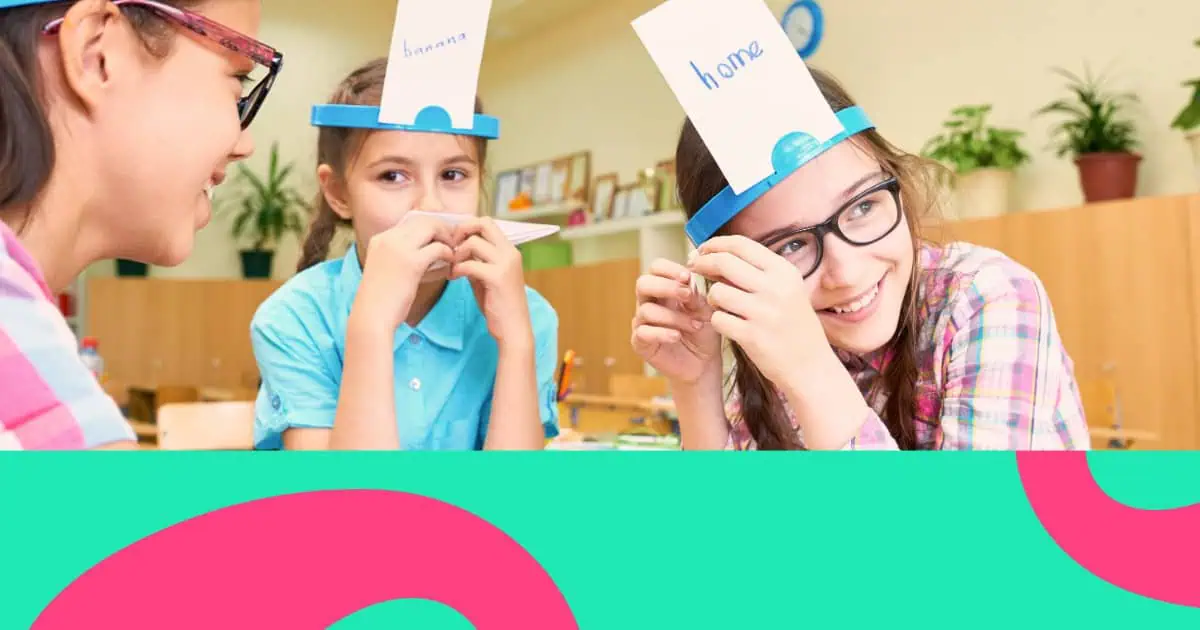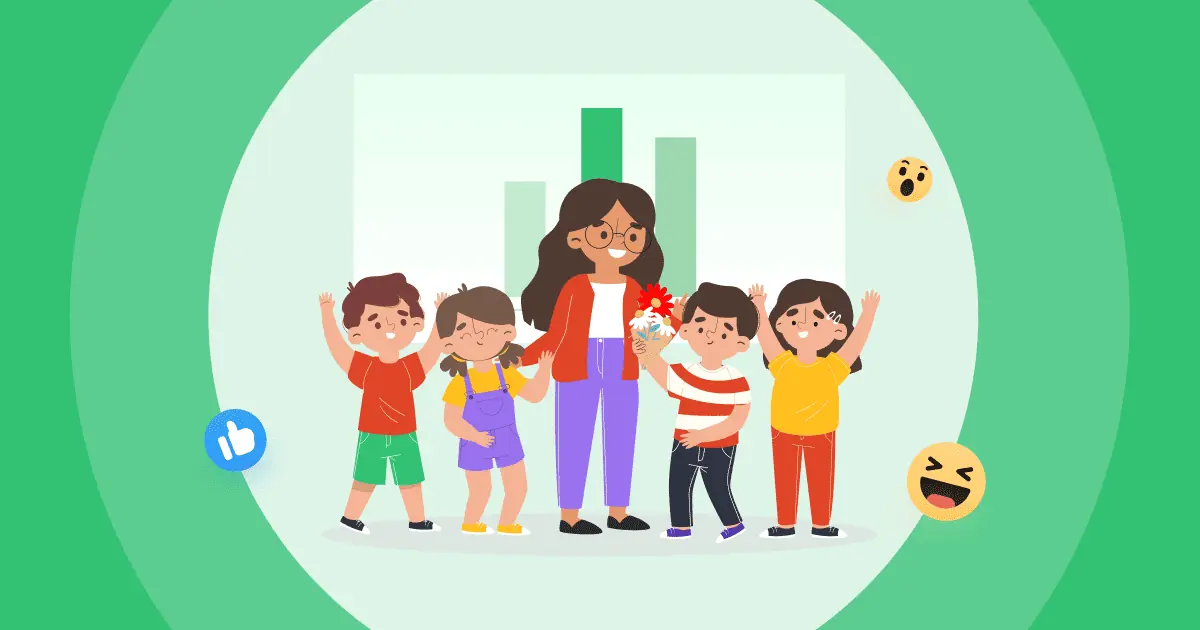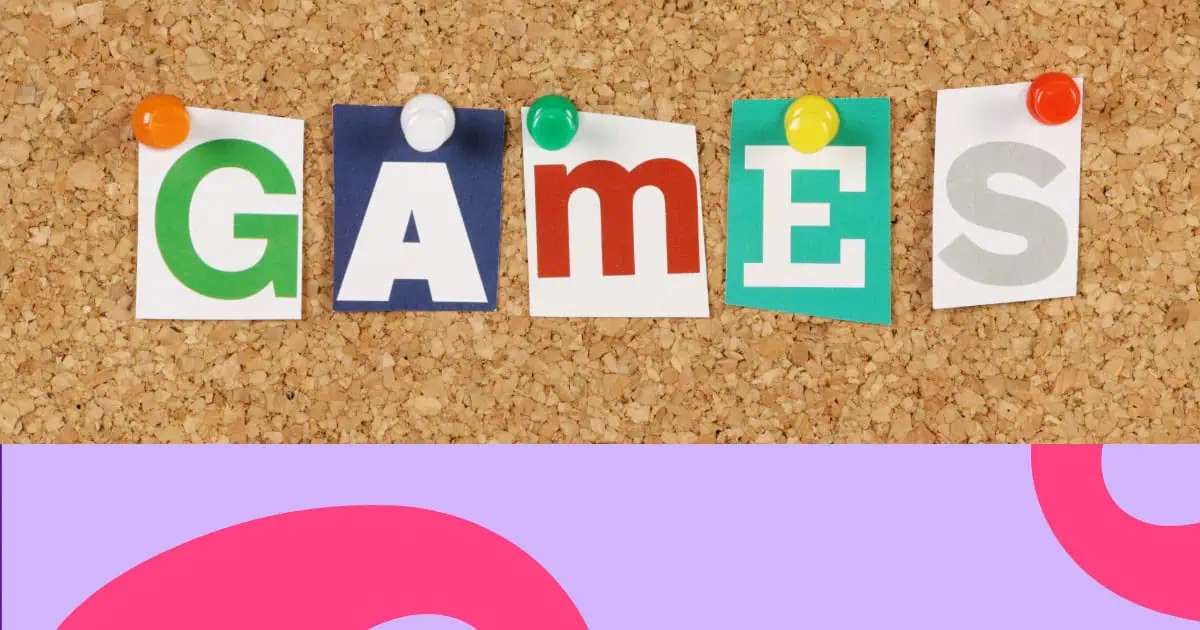Whether you've been learning from home or just getting back into the classroom groove, reconnecting Face-to-Face can feel awkward at first.
Luckily, we've got 20 super fun icebreaker games for students and easy no-prep activities to loosen up and strengthen those friendship bonds once more.
Who knows, students might even discover a new BFF or two in the process. And isn't that what school is all about - making memories, inside jokes, and lasting friendships to look back on?
To strengthen student engagement and build their interest in learning, it's essential to mix up the classes with fun ice-break activities for students. Check out some of these exciting bunch:
Elementary school icebreakers (ages 5-10)
🟢 Beginner level (ages 5-10)
1. Guess the pics
Objective: Develop observation skills and vocabulary
How to play:
- Select pictures related to your lesson topic
- Zoom in and crop them creatively
- Display one picture at a time
- Students guess what the picture shows
- First correct guess wins a point
AhaSlides integration: Create interactive quiz slides with images, allowing students to submit answers via their devices. Real-time results show on screen.
💡 Pro tip: Use AhaSlides' image reveal feature to gradually show more of the picture, building suspense and engagement.
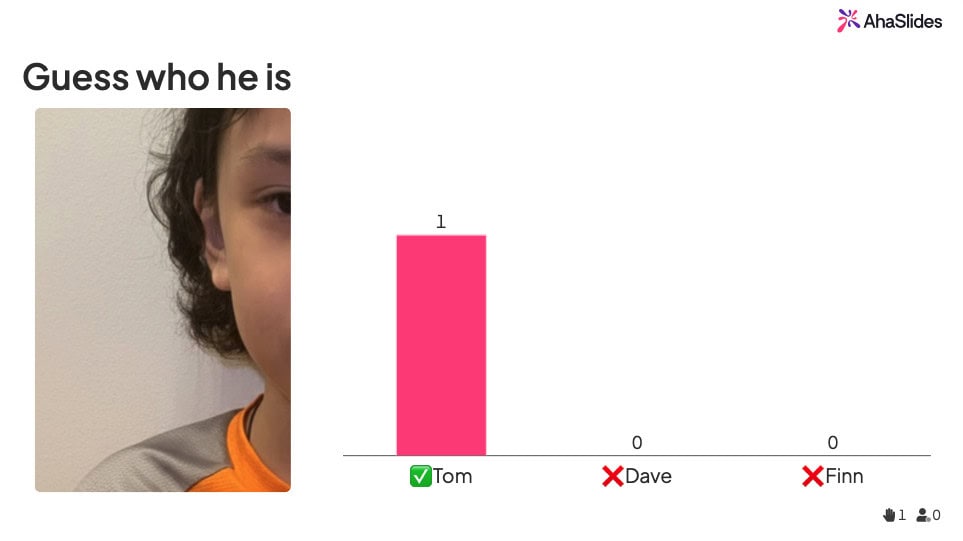
2. Emoji charades
Objective: Enhance creativity and non-verbal communication
How to play:
- Play in teams for added competition
- Create a list of emojis with different meanings
- One student selects an emoji and acts it out
- Classmates guess the emoji
- First correct guess earns points
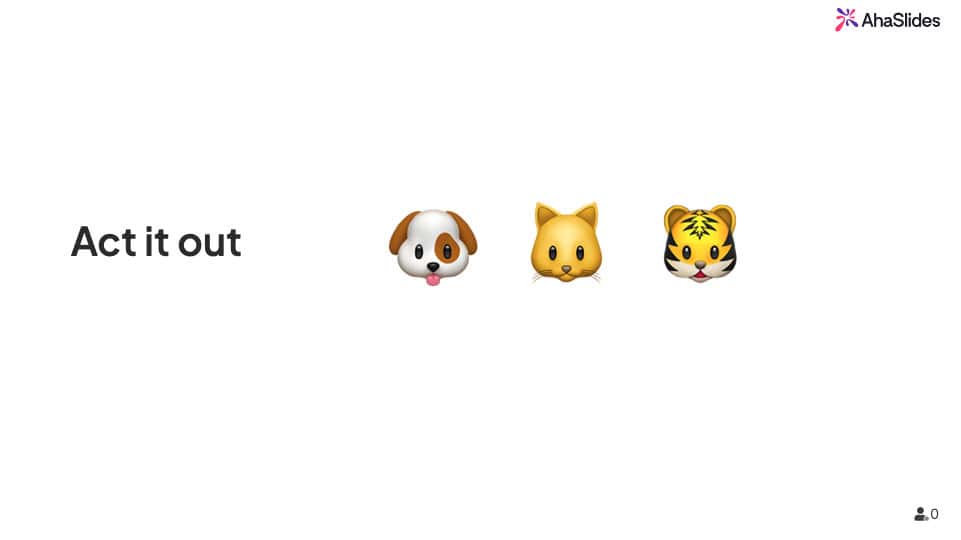
3. Simon says
Objective: Improve listening skills and following directions
How to play:
- Teacher is the leader (Simon)
- Students follow commands only when prefixed with "Simon says"
- Students who follow commands without "Simon says" are out
- Last student standing wins
🟡 Intermediate level (ages 8-10)
4. 20 questions
Objective: Develop critical thinking and questioning skills
How to play:
- Divide class into teams
- Team leader thinks of a person, place, or thing
- Team gets 20 yes/no questions to guess
- Correct guess within 20 questions = team wins
- Otherwise, leader wins
5. Pictionary
Objective: Enhance creativity and visual communication
How to play:
- Use online drawing platform like Drawasaurus
- Create private room for up to 16 students
- One student draws, others guess
- Three chances per drawing
- Team with most correct guesses wins
6. I spy
Objective: Improve observation skills and attention to detail
How to play:
- Students take turns describing objects
- Use adjectives: "I spy something red on the teacher's table"
- Next student guesses the object
- Correct guess gets to be the next spy
Middle school icebreakers (ages 11-14)
🟡 Intermediate level (ages 11-12)
7. Top 5
Objective: Encourage participation and discover common interests
How to play:
- Give students a topic (e.g., "top 5 snacks for break")
- Students list their choices on a live word cloud
- Most popular entries appear largest
- Students who guessed #1 get 5 points
- Points decrease with popularity ranking
💡 Pro tip: Use the word cloud feature to create real-time visualisations of student responses, with size indicating popularity. AhaSlides' word cloud updates in real-time, creating an engaging visual representation of class preferences.
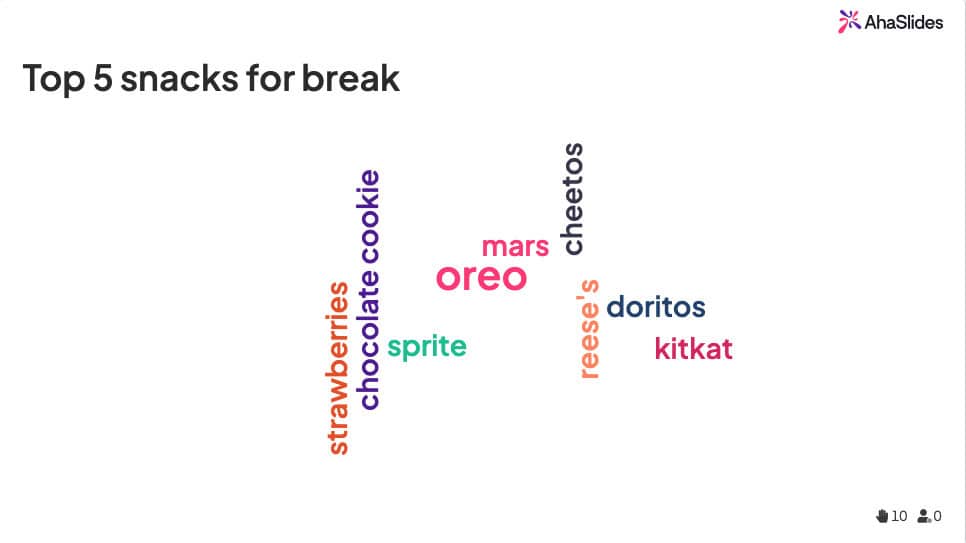
8. Flag of the world quiz
Objective: Build cultural awareness and geography knowledge
How to play:
- Divide class into teams
- Display flags of different countries
- Teams name the countries
- Three questions per team
- Team with most correct answers wins
AhaSlides integration: Use the quiz feature to create interactive flag identification games with multiple choice options.
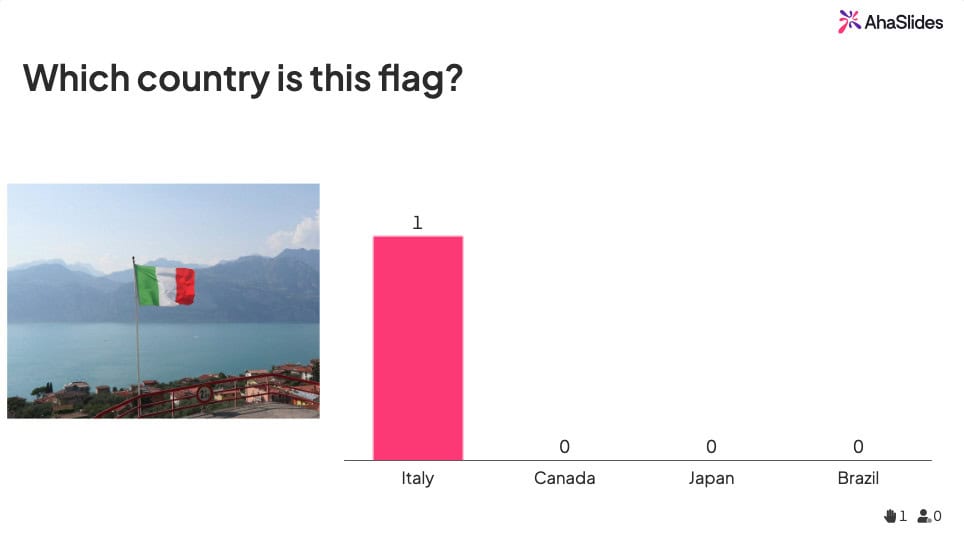
9. Guess the sound
Objective: Develop auditory skills and cultural awareness
How to play:
- Choose topic of interest (cartoons, songs, nature)
- Play sound clips
- Students guess what the sound represents
- Record answers for discussion
- Discuss reasoning behind answers
🟠 Advanced level (ages 13-14)
10. Weekend trivia
Objective: Build community and share experiences
How to play:
- Weekend Trivia is perfect to beat the Monday blues and a great classroom icebreaker for high schoolers to get to know what they've been up to. Using a free interactive presentation tool like AhaSlides, you can host an open-ended session where the students can answer the question without a word limit.
- Then ask the students to guess who did what on the weekend.
- Ask the students what they did on the weekend.
- You can set a time limit and display the answers once everyone has submitted theirs.
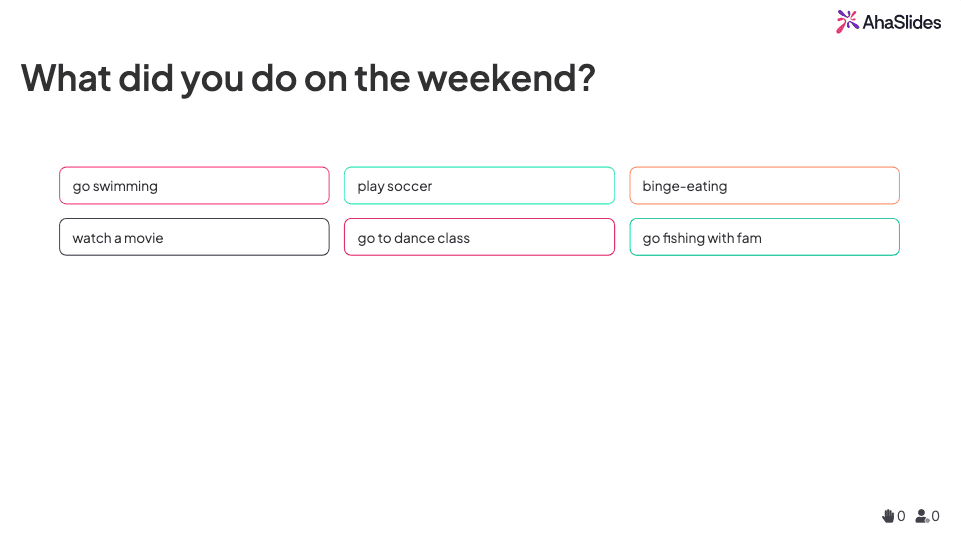
11. Pyramid
Objective: Develop vocabulary and associative thinking
How to play:
- Discuss connections and relationships
- Display random word (e.g., "museum")
- Teams brainstorm 6 related words
- Words must be connected to main word
- Team with most words wins
12. Mafia
Objective: Develop critical thinking and social skills
How to play:
- Assign secret roles (mafia, detective, citizen)
- Play in rounds with day and night phases
- Mafia eliminates players at night
- Citizens vote to eliminate suspects during day
- Mafia wins if they outnumber citizens
High school icebreakers (ages 15-18)
🔴 Advanced level (ages 15-18)
13. Odd one out
Objective: Develop analytical thinking and reasoning skills
How to play:
- Present groups of 4-5 items
- Students identify the odd one out
- Explain reasoning behind choice
- Discuss different perspectives
- Encourage creative thinking
14. Memory
Objective: Improve memory skills and attention to detail
How to play:
- Display image with multiple objects
- Give 20-60 seconds to memorise
- Remove image
- Students list remembered objects
- Most accurate list wins
AhaSlides integration: Use the image reveal feature to show objects, and the word cloud to collect all remembered items.
15. Interest inventory
Objective: Build relationships and discover common interests
How to play:
- Students complete interest worksheet
- Include hobbies, films, places, things
- Teacher displays one worksheet per day
- Class guesses who it belongs to
- Reveal and discuss common interests
16. Hit it in five
Objective: Develop quick thinking and category knowledge
How to play:
- Choose category (insects, fruits, countries)
- Students name 3 items in 5 seconds
- Play individually or in groups
- Track correct answers
- Most correct wins
17. Pyramid
Objective: Develop vocabulary and associative thinking
How to play:
- Display random word (e.g., "museum")
- Teams brainstorm 6 related words
- Words must be connected to main word
- Team with most words wins
- Discuss connections and relationships
18. Me too
Objective: Build connections and discover commonalities
How to play:
- Student shares personal statement
- Others who relate say "Me too"
- Form groups based on common interests
- Continue with different statements
- Use groups for future activities
AhaSlides integration: Use the word cloud feature to collect "Me too" responses, and the grouping feature to organise students by interests.
Virtual learning icebreakers
💻 Technology-enhanced activities
19. Virtual scavenger hunt
Objective: Engage students in virtual environment
How to play:
- Create list of items to find at home
- Students search and show items on camera
- First to find all items wins
- Encourage creativity and resourcefulness
- Discuss findings and experiences
20. One-word check-in
Objective: Used before and after the class to gauge sentiments and as an ice-breaker.
How to play:
- Students create custom virtual backgrounds
- Share backgrounds with class
- Vote on most creative design
- Use backgrounds for future sessions
AhaSlides integration: Use the image feature to display background designs, and the voting feature to select winners.
Expert tips for maximum engagement
🧠 Psychology-based engagement strategies
- Start with low-risk activities: Begin with simple, non-threatening games to build confidence
- Use positive reinforcement: Celebrate participation, not just correct answers
- Create safe spaces: Ensure all students feel comfortable participating
- Vary the format: Mix individual, pair, and group activities
🎯 Common challenges & solutions
- Shy students: Use anonymous voting or small group activities
- Large classes: Break into smaller groups or use technology tools
- Time constraints: Choose 5-minute quick activities
- Virtual settings: Use interactive platforms like AhaSlides for engagement
📚 Research-backed benefits
When implement right, icebreakers for students can have numerous benefits according to research:
- Increased participation
- Reduced anxiety
- Better relationships
- Enhanced learning
(Source: Medical Education)
Key Takeaways
Icebreaker games for students go beyond just breaking the initial ice and invite conversation, they promote a culture of solidarity and openness among teachers and students. Frequently integrating interactive games in classrooms is proven to have many benefits, so don't shy away from having some fun!
Looking for multiple platforms to play no-prep games and activities can be daunting, especially when you have tons to prepare for the class. AhaSlides offers a wide range of interactive presentation options that are both fun for teachers and students.
Frequently Asked Questions
How do I adapt icebreakers for different age groups?
For younger students (ages 5-7), focus on simple, visual activities with clear instructions. For middle schoolers (ages 11-14), incorporate technology and social elements. High schoolers (ages 15-18) can handle more complex, analytical activities that encourage critical thinking.
What are 3 fun icebreaker questions?
Here are 3 fun icebreaker questions and games that students can use:
1. Two Truths and a Lie
In this classic, students take turns saying 2 truthful statements about themselves and 1 lie. The others have to guess which is the lie. This is a fun way for classmates to learn real and fake facts about each other.
2. Would you rather…
Have students pair up and take turns asking "would you rather" questions with a silly scenario or choice. Examples can be: "Would you rather only drink soda or juice for a year?" This lighthearted question lets personalities shine.
3. What's in a name?
Go around and have each person say their name, along with the meaning or origin of their name if they know it. This is a more interesting intro than just stating a name, and it gets people thinking about the stories behind their names. Variations could be the favourite name they've ever heard or the most embarrassing name they can imagine.
What is a good introduction activity?
Name Game is a great activity for students to introduce themselves. They go around and say their name along with an adjective that starts with the same letter. For example "Jazzy John" or "Happy Hanna." This is a fun way to learn names.
